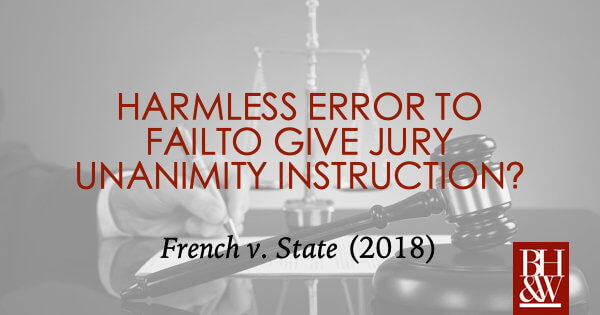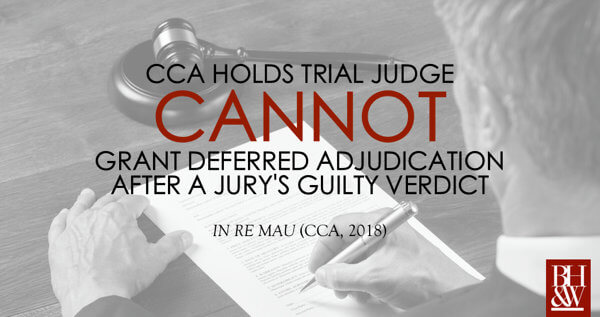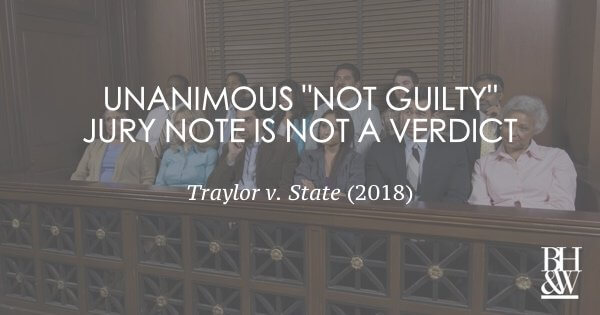 The general rule is that the defendant is to be tried only for the offense charged, not for any other crimes or for being a criminal generally. However, evidence of extraneous acts of misconduct may be admissible if (1) the uncharged act is relevant to a material issue in the case, and (2) the probative value of that evidence is not significantly outweighed by its prejudicial effect. Because the propensity to commit crimes is not a material fact in a criminal case, Texas Rule of Evidence 404(b) explicitly prohibits the admission of uncharged acts to prove conduct in conformity with a bad character.
The general rule is that the defendant is to be tried only for the offense charged, not for any other crimes or for being a criminal generally. However, evidence of extraneous acts of misconduct may be admissible if (1) the uncharged act is relevant to a material issue in the case, and (2) the probative value of that evidence is not significantly outweighed by its prejudicial effect. Because the propensity to commit crimes is not a material fact in a criminal case, Texas Rule of Evidence 404(b) explicitly prohibits the admission of uncharged acts to prove conduct in conformity with a bad character.
Last week the 2nd District (Fort Worth Court of Appeals) considered the issue of modus operandi (i.e. criminal signature) in the case of Price v. State. In Price, the appellant had been convicted at trial of aggravated robbery after he was identified by a convenience store clerk as the African American man who entered the store armed with a crowbar and wearing a towel on his head demanding money from the cash register. The State offered evidence of other uncharged convenience store robberies as evidence of “identity” or modus operandi under Texas Rule of Evidence 404(b). Over appellant’s objection, the trial court allowed the evidence of the extraneous offenses to come in.
If you were to read only the majority opinion, you might agree that because the defense attempted to impeach the convenience store clerk on the issue of identity, the defendant opened the door to (i.e. made relevant) the evidence that there were three similar robberies done by a man in the local area. However, from Justice Dauphinot’s dissent, we learn that there was more to it than that.
Justice Dauphinot demands the majority to answer how it was that the defense opened the door to the issue of identity of when all the defense counsel did during his cross of the State’s witness was to repeat the questions that the prosecutor already asked. You see, the prosecutor in this case, in an effort to take the sting out the some of the weak points, raised the issue of identity during direct examination. How then, asks the dissenting Justice, can the prosecutor then rely on the issue of “identity” to survive a 404(b) objection to the admissibility of the extraneous offenses?
Justice Dauphinot also points out that mere “identity” is typically not enough to survive a 404(b) objection in cases like this. What the court should really be concerned with is modus operandi.
One of the main rationales for admitting extraneous-offense evidence is to prove the identity of the offender. Here, the theory of relevancy is usually that of modus operandi in which the pattern and characteristics of the charged crime and the uncharged misconduct are so distinctively similar that they constitute a ―signature. Usually, it is the accretion of small, sometimes individually insignificant, details that marks each crime as the handiwork or modus operandi of a single individual.
In this case, the majority noted that the offense at trial and the extraneous offenses were all committed by a black man. After all, how many black men can there possibly be in North Texas? The court further noted, without discussion, that the men in the extraneous offenses also wore a towel on his head. Lastly, the majority mentions that the man or men in the extraneous offenses carried a weapon. Not always a crowbar. In one offense the perpetrator carried a knife and in another he carried a steel pipe. To Justice Dauphinot, these facts are not markedly similar enough to indicate a modus operandi. In her opinion, the State did not meet its burden to show that that “the extraneous act has relevance apart from its tendency to prove character conformity.”










